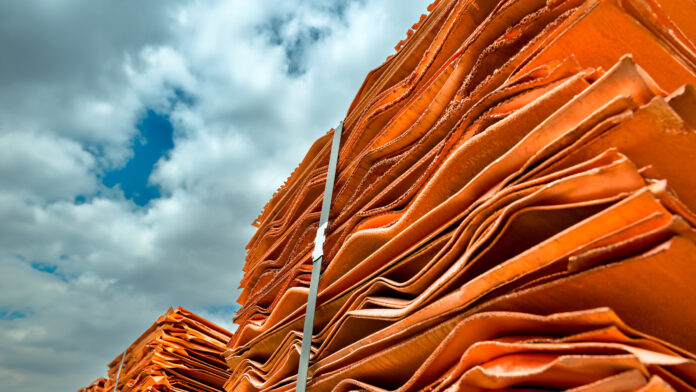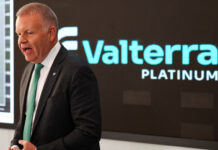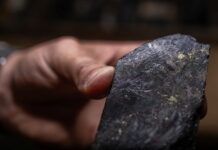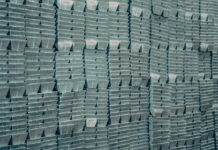
SHAREHOLDERS in copper exploration firm Orion Minerals can look forward to brighter days after it unveiled bankable feasibility studies of two projects in the Northern Cape. Prieska Copper Zinc Mine (PCZM) and Flat Mines will produce 28,500 tons of copper a year, said Orion.
Orion’s share performance has been uninspiring, down 33% since taking a secondary inward listing on the JSE in 2017. In its defence, building mines — even brownfields ones, which it is doing — is a slow-drip process. Even in established copper districts such as Chile, projects can take 20 years to build from discovery to production.
Nonetheless, the hope is that the newsflow from Orion speeds up from here, taking its share price with it, especially as it’s a good time to be mining copper. Hinting at its potential to surge, the metal’s price moved through $10,000/t in March, driven by expectations it could push through last year’s record high of $11,000/t. (Copper is currently trading at about $9,477/t).
“I think we’ll see higher than $12,000,” Kostas Bintas, global head of metals and minerals at Swiss commodities trading house Mercuria, told the Financial Times recently.
With the market seemingly at its back, Orion is hoping to raise R8.9bn to fund both projects, though not in a single bite. PCZM consists of two stages with the shallower part of the orebody — known as the Upper Project — a starter project that Orion says can be built in 13 months for R550m.
“That is a modest ticket, especially bearing in mind we have got the Industrial Development Corp [IDC],” said Errol Smart, Orion’s former CEO. He was speaking in March a week before resigning. The IDC holds minority project stakes and will finance Orion’s BEE shareholders.
Succession
Smart’s resignation came as a surprise, but he tells Miningmx there was no bust-up over strategy. “I’m just exhausted and the project needs fresh, firm legs to get funding and construction completed.” His replacement is Tony Lennox, previously a non-executive director of Orion and before that a former MD of Palabora Copper when it was owned jointly by Rio Tinto and Anglo American. “Tony is really good and more than capable of taking it forward,” said Smart. “I’m still involved as an adviser so it’s not like I’m out. I just won’t have the daily grind to worry about.”
One of Lennox’s first jobs will be structuring the project finance, based on various principles. Smart said copper traders and royalty companies are only too keen to provide prepayment terms for the copper, given the growing supply deficit.
Helpfully, the differing copper output of Orion’s projects enables blending, which offtakers appreciate as it gives them flexibility. Shareholders should expect Orion to step forward with an announcement before long. There will also be commercial debt, most likely a syndication of capital — a process Smart said can take the best part of a year to do.
Equity funding
A third funding avenue is equity. Though it’s not the cheapest form of financing it is nonetheless critical. “There will always be an equity component,” said Smart. “You can’t get away from it. The key is to minimise it.” The participation of a major mining company is a possibility.
“There are some interesting discussions to be had,” said Smart of potential equity partners. “The majors recognise we can operate fleet of foot. We have moved quickly at a relatively low cost whereas they [larger companies] would have struggled. But we could bring in a big brother to help us. It is an interesting idea so we’ll see where those discussions go.”
If Orion can mobilise funds for PCZM’s Upper Project, first production will come on stream roughly 13 months after the final investment decision. It will operate for about four years while Orion prepares PCZM’s deeps section. To keep costs tidy, the Upper Project will “sacrifice” its zinc by-production — forecast to be 65,000 tons a year — in favour of gold and silver by-products.
It’s a pity this production isn’t happening now while both metals trade at historic highs. But given the extent of geopolitical and economic distress globally, there’s no indication that safe-haven precious metals will lose their lustre.
All in all, the PCZM mine will operate for about 14 years. Phased to follow PCZM is Flat Mines, which will operate concurrently but first requires A$103m in capital. It is scoped to produce average production of 6,500 tons a year of copper, peaking at 9,500 tons a year with a mine life of 12 years. Smart said more pre-development is required at Flat Mines, so described because the deposit is sausage-like before plunging halfway at a 90° angle.
The feasibility studies estimate an all-in sustaining cost of $4,550/t of copper equivalent metal sold. Total capital intensity, including project costs, is just below $9,200 per equivalent ton. “You see other projects talking of $12,000/t so what we’ve got, with a fully permitted project in the lowest cost quarter, is top order,” said Smart.
An earlier version of this article appeared in the Financial Mail in April.











